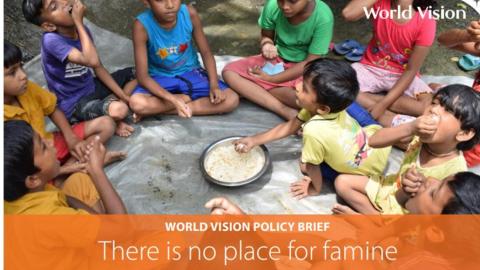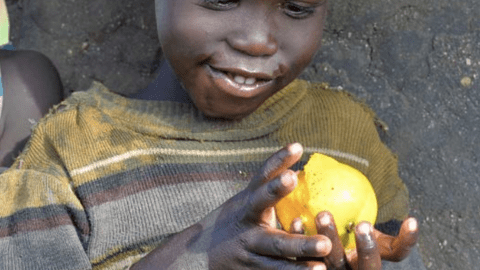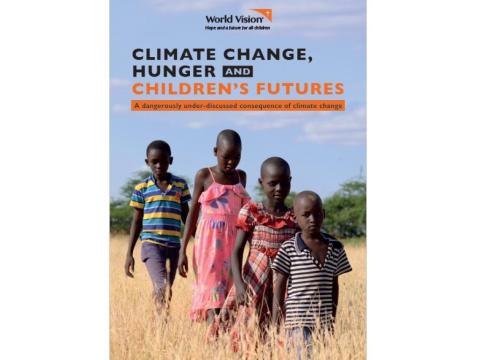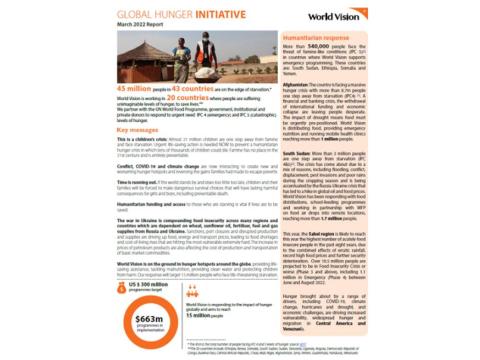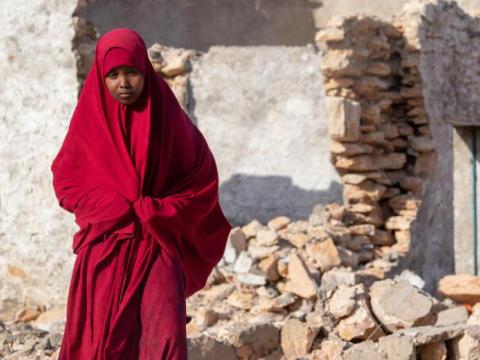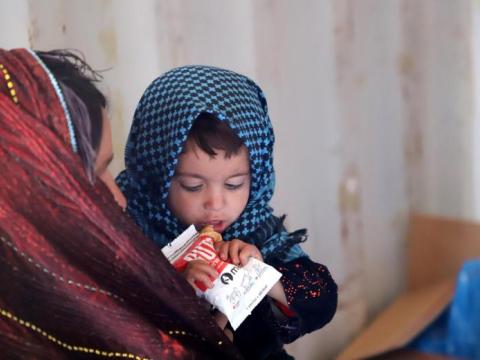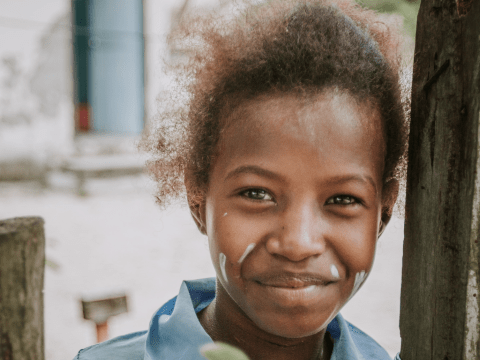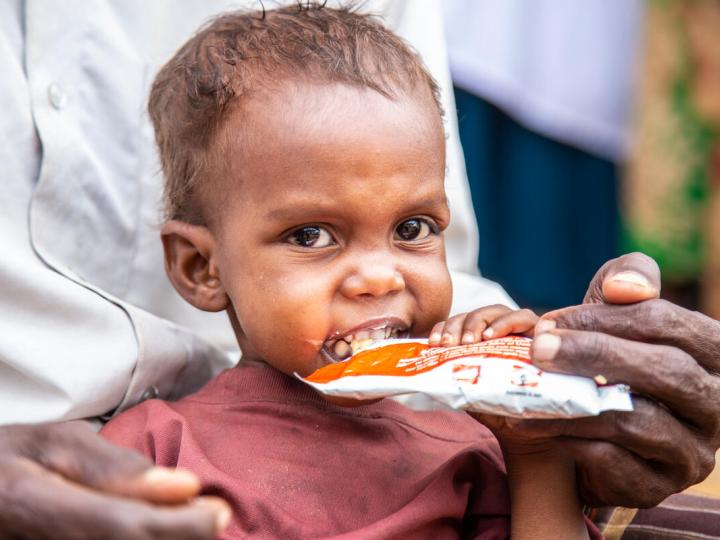
Food Security in Emergencies
Food Security in Emergencies
Across the globe, over 45 million girls, boys, women and men – around half of them children – are at risk of starvation in 43 countries, with 923,000 people are currently living in famine-like conditions (IPC5) in Afghanistan, Ethiopia, Somalia, South Sudan, Nigeria and Yemen in 2022, a more than 500% increase in one year.
In 2020, global hunger increased by 25% from the previous year – resulting in 811 million hungry people. This represents an increase greater than the total increase over the past 5 years. By 2030, projections are that 656.8 million people will be hungry. This is 6% higher than the number of hungry people in 2015, the year 193 governments committed to zero hunger in the 2030 Agenda on Sustainable Development 2015.
Our Impact
The global hunger crisis is being driven by conflict, climate change, the economic impacts of COVID-19 and is now supercharged by the Ukraine crisis's knock-on effects, which are driving up food, fuel, and agricultural inputs prices and dramatically increasing the costs of providing humanitarian assistance.
Hunger and food insecurity are children's crises. Food insecurity is a leading cause of wasting in children, with malnutrition as the main underlying cause of 45% of all preventable deaths of children under five. Children who suffer from wasting are 11 times more likely to die than well-nourished children. In 2020, 149.2 million (22%) children under 5 years of age were stunted (SDG Indicator 2.2.1) and 45.4 million (6.7%) children under 5 suffered from wasting.
World Vision's Response
Whenever there is any crisis, hunger goes hand in hand. The largest hunger crises in the world today, where millions of people are food insecure, are due to displacement or loss of livelihoods due to conflict or climate shocks, or the rising cost of food, making food unattainable or inaccessible.
World Vision believes that every child and family have the right to enough nutritious food each day to live a healthy life. Meeting immediate food needs helps free vulnerable households from having to devote their time and energy to securing the most basic components of their diet and helps ensure they have the means to invest in making their farms more productive, their meals more nutritious, and their children more highly educated, cared for and protected. To ensure children and families do not have to go to bed hungry, World Vision provides life-saving food and cash assistance to communities, schools and vulnerable groups.
Our largest food assistance programmes are General Food Distributions, where we distribute food directly to vulnerable groups, including women, minorities, children and families, and people with disabilities. As the most vulnerable population in a food emergency, it is essential we prioritize these groups to prevent them from falling further into poverty or using harmful coping strategies.
Malnutrition is also a very serious problem associated with food crises. Malnutrition in children under the age of 5, as well as pregnant/lactating women, puts both groups at severe risk. Food insecurity is a leading cause of wasting in children, and malnutrition is the main underlying cause of 45% of all preventable deaths of children under five.
School Meals are one of the most effective tools we have to transform food systems and the lives of the next generation. In addition to increasing school enrollment with the guarantee that children receive at least one nutritious meal a day, School Meals serve as an entry point for the community at large. Smallholders provide produce; clean water and hygiene are integrated in the schools; and other employment is available for members of the community. Children are protected from harm while they are given a chance to have an education.
World Vision is committed to serving the most vulnerable – but we cannot do this work alone, By working with partners, including institutions, governments, corporations, faith communities and more at global, regional and local level, we are able to reach more vulnerable communities every year. Through our partnership with the World Food Programme, World Vision reached 11.5 million people in 2021, over 6.6 million of whom were children and over 9.7 million of whom live in fragile contexts.
Learn more about how World Vision is responding to hunger crises worldwide
